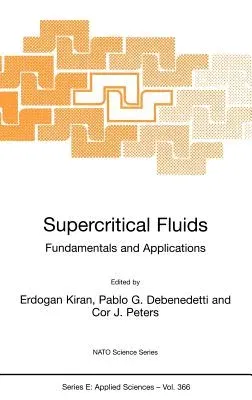Supercritical Fluids: Fundamentals and Applications (2000)Hardcover - 2000, 31 May 2000

Qty
1
Turbo
Ships in 2 - 3 days
In Stock
Free Delivery
Cash on Delivery
15 Days
Free Returns
Secure Checkout

Part of Series
NATO Science Series E:
Part of Series
NATO Science Series. Series E, Applied Sciences
Part of Series
NATO Science Series: E:
Print Length
596 pages
Language
English
Publisher
Springer
Date Published
31 May 2000
ISBN-10
0792362357
ISBN-13
9780792362357
Description
Product Details
Book Edition:
2000
Book Format:
Hardcover
Country of Origin:
US
Date Published:
31 May 2000
Dimensions:
23.39 x
15.6 x
3.33 cm
ISBN-10:
0792362357
ISBN-13:
9780792362357
Language:
English
Location:
Dordrecht
Pages:
596
Publisher:
Weight:
1034.19 gm